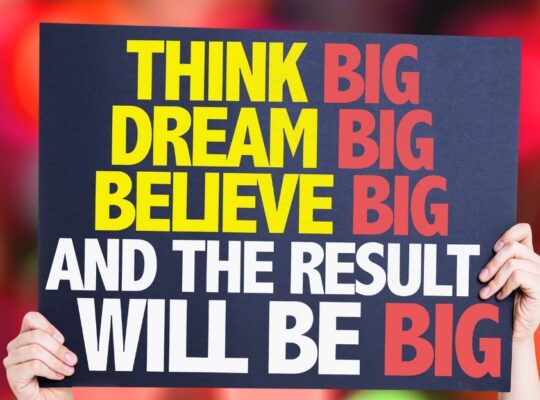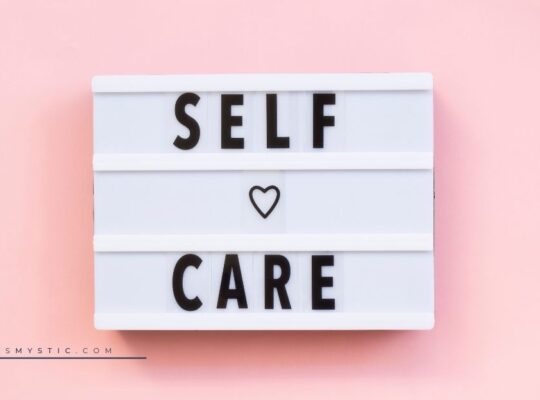Everything you’ve done, are doing, and will do begins as a thought. Humans first create their world in their imaginations, moving what they believe into reality. A prime example of this is science fiction shows and movies.
Even though many of the gadgets shown didn’t exist when the shows were written, we have some of those items today. Things we now take for granted, like video calls, talking to your computer, and space travel, were once only a part of someone’s imagination.
You can use visualization to see yourself accomplishing what you want from life. Visualization isn’t the same as daydreaming, though.
Daydreams are pleasant fantasies that can help decide what you want, but they don’t, by themselves, help you build your dreams into action. Visualization is a technique that helps you make your dreams come true.
Related: Visualization meditation: #1 manifestation trick to manifest your desires instantly…
Why Visualization
Before you start visualizing to improve your life, it’s essential to understand why visualization works. If you think of visualization as a daydream or some fluffy, feel-good, mumbo jumbo, it won’t work for you. There is science behind the technique of visualization. Visualization is also something you need to learn, develop, practice, and improve to harness its power.
In a study by the Cleveland Clinic Foundation, researchers found that participants who did physical exercises showed a 53% increase in finger strength. The participants who did the exercises mentally, but not physically, increased their finger strength by 35%.
A study at Stanford University showed that gymnasts who visualized complex gymnastic routines could complete them for the first time after attempting them for over a year. The mind has power over what the body can do.
Psychologists have developed visualization methods to replace patients’ painful mental images with imagery that calms and relaxes them. Replacing negative images with positive ones provides emotional stability and a clear way to process painful events. Studies conducted by the Harvard Gazette and the National Institutes of Health were used to develop these psychological visualization methods.
Scholars, scientists, and business leaders use data visualization to convey large amounts of information through graphs and charts. The Journal of American Statistical Association published initial research from Bell Labs on how different visual representation forms affect how people perceive data. The research showed how visualization helps people to consume and understand large volumes of input.
Reticular Activation System
Visualization works because of how the brain processes information from the subconscious to the conscious mind. The Reticular Activation System (RAS) is a group of neurons located near the top of the spinal cord extending about two inches into the brain. These neurons are nerve cells that help filter information and through your subconscious and conscious mind.
Your brain gathers information from your five senses:
- Sight
- Sound
- Touch
- Smell
- Taste
Your senses send a massive quantity of information to your brain. Your skin, for example, covers approximately 20 square feet, with a million nerve cells that sense pain, pressure, temperature, and location. Your eyes connect to over 300 megapixels of visual information every second. And yet, the human brain can only process about 100 pieces of information every second.
The RAS determines what information needs to be in your conscious mind and what information can be stored in your subconscious. As an example, if you’re driving and looking for a street sign, your conscious mind won’t notice the color of the houses or flowers along the way, even though your eyes see that information. Instead, the RAS focuses your attention on the names on the street signs.
You can train your brain, through the RAS, to get what you want. Using visualization to focus your mind, your subconscious begins to notice details about your desires and tells your conscious mind to pay attention to those details. That’s why when you visualize a successful meeting with a coworker, you start to notice more about how that coworker acts and interacts with others. Your mind then starts to form a plan to best work with that person to achieve success.
Related: The role of visualization while manifesting a new reality…
Visualization Basics
What can you use ‘visualization’ to achieve?
The benefits of visualization include:
- Accomplishing Goals
- Performance
- Productivity
- Personal Growth
- Reduce Stress
However, you cannot use visualization to fly, swim underwater for an hour without needing a breath, or go back in time. These are impossible tasks that no amount of visualization can help you achieve.
And while visualization can help you improve your performance and productivity, you will need to start with some level of ability or visualize yourself gaining the knowledge and skills required. Visualization can help you gain and increase competence, but only if your goals are truly obtainable.
Visualization is a personal practice, and the details will vary from individual to individual. There are many methods available. You need to find the ones that you are most comfortable with and that work for you.
Basic Visualization Principles
Regardless of exactly how you practice visualization, there are some principles to remember:
1| Don’t Overthink It
A beginning visualization method is to think of a red circle. Easy, right? Overthinking makes your mind wander and question what shade of red and how big or small the circle should be. When you are visualizing your goals, let the processes guide you. Don’t try to force a picture to appear.
2| Use All Your Senses
Each sense you use reinforces your visualization in your mind. The more complete your mental picture of success is, the easier it will be to manifest the result you want. Manifesting is bringing your visualization to life and making it a real part of your world.
3| Work Through Distractions
It takes practice to visualize your goals. People often become distracted when they are visualizing. Your mind may wander to your grocery shopping list, what to cook for dinner, or how many appointments you have next week. Both beginners and experienced people who use visualization should be kind to themselves and not see distractions as failures. When your mind is ready, you can refocus and continue your efforts.
Be Relaxed
Visualization is a form of mental exercise. You wouldn’t go running or play sports without warming up, and you shouldn’t try to visualize when you are stressed or worried. Negative emotions will cloud your visualization and may alter how you see your outcomes. Take time to unwind and relax before you focus on visualization.
1| Practice Regularly
Daily visualization practice helps focus your mind, increases your awareness, and maximizes the Law of Attraction. According to the Law of Attraction, the universe will grant you what you desire when you focus on achieving it. The RAS in your brain plays a role in noticing what you are attracting in your life.
2| Get Emotional
Don’t discount the feelings and emotions your visualization evokes. Trust that your subconscious mind is sensing your fear, regret, happiness, and desire. Use your emotions to guide your goals.
3| Believe
This is another reminder that visualizations aren’t daydreams. Believe that the work you are doing will result in achieving your goals.
Mental Exercise
Building a vision in your mind takes practice. You can start with these exercises:
1| Light
Lose your eyes and picture a candle, bonfire, or lamp. Add detail to your visualization by asking yourself these questions:
- What size is your light? Is it a votive candle, a backyard bonfire, or a desk lamp?
- How much candle has burned away? How much wood is at the base of the fire? Is your lamp simple or ornate?
- How close are you to your light?
2| Light II
This time look at a light source, then close your eyes. You will probably see a bright afterglow. Now try to draw the light source around the afterglow you see.
3| Fruit
Visualization works best when you immerse yourself and use all your senses. For this exercise, start by picturing your favorite fruit. Then ask yourself:
- How heavy is the fruit?
- Does the skin or peel of the fruit have a rough or smooth texture?
- Take a bite. What do you smell?
- How does your fruit taste? Is it tart or sweet? Is it juicy?
- What sound does chewing your fruit make?
4| Fill a Room
Close your eyes and picture an object inside a room. For example, picture a table. Now design the room by asking yourself:
- Where in the room is the table?
- How far is the table from other furniture?
- What is on the table?
- Is the room light or dark?
5| Picture
Study a photograph, artwork, or picture. Then close your eyes and work to recreate the entire picture in your mind. Work on the details – the colors, the distance between objects, and smaller details like the color of peoples’ hair, clothes, or how many trees are in the picture.
6| 3-D
Close your eyes and picture an object. For example, picture a box of cereal. Now make the object three-dimensional (3-D). Rotate it and ask yourself:
- What does each side look like?
- How does the light or shadow change as the object rotates?
- What do you notice if you rotate it in the opposite direction?
7| Eyes Open 3-D
This time keep your eyes open and picture an object in front of you. Build in as much detail as possible. Rotate, flip, and move it around. How does the object interact with the objects that are there?
8| Get in the Picture
For this exercise, visualize your favorite place. Now add yourself into the picture. Focus on each of your senses and ask:
- What is the temperature? Do you feel a breeze? Is there sunlight warming your skin?
- What sounds are there? Do you hear birds, waves, or the sounds of a ballgame or concert?
- Do you smell flowers, food, or the ocean?
- What does the air around you taste like? Is it salty, dry, or fresh?
9| Get in the Picture II
Use the same location from the last exercise, but this time, move and interact in the location.
Consider:
- What do you pick up? How does it feel? Where do you put it?
- How do your footsteps sound? Are you walking on leaves, sand, or concrete?
- Do you feel pulled in one direction or another?
- Do you talk with anyone? What do you say?
While these exercises aren’t directly visualizing your desires and goals, they help you focus and practice visualization.
Visualization Steps
We’ve already established that visualizations aren’t daydreams. You can’t form an image in your head and have it pop into existence. The visualization steps are designed to help you work through the entire visualization process from start to finish.
- Know What You Want
- Use Details
- Include Emotions
- Break It Down
- Practice Daily
- Persevere
You should have a clear idea of what you want to visualize. To manifest good into your life, consider what positive situations you’ve had in the past. What brought you happiness and joy? What made you feel fulfilled? You want to visualization similar situations to improve your life.
Details about your goals help make your visualization realistic. For example, if your goal is to get a promotion, what title are you seeking? What rate of pay do you want? How many people will report to you? Where will your new desk or office space be? These details help you believe in a positive outcome.
Emotions are powerful forces. Using the promotion example, consider how you will feel each time you do something that moves you closer to success? What report or meeting might you work on that will help you reach your goal? When you get the promotion, what emotions make it worthwhile?
Once you’ve successfully created a visualization or success, it’s time to work backward and break down the steps you’ll need to take to get there. One at a time, picture yourself doing everything you need to do to succeed. The more detailed you visualize each step, the easier it will be to manifest the outcome you want.
Daily visualization practice keeps you focused on your success. Hold your visualization in your mind each morning to give intent to your day. Visualize in the evening to calm and prepare yourself for tomorrow.
Perseverance is the key to greater success. As the Law of Attraction starts bringing you closer to what you desire, keep practicing your visualization to reach your ultimate goal. If your plans get sidetracked, refocus your visualization on the next step you need to take.
Your Goals
Your goals are as unique as you are. No matter what your specific goals are, you can use visualization to realize them. The key is to stay focused on your goals. For the Law of Attraction to work, you need to be ready to embrace your accomplishments.
Your whole being should:
- Be Positive
- Believe
- Be Committed
- Be Detailed
- Be After
Consider a grade school classroom. Most teachers decorate their room, often with posters and pictures that list the rules and give students directions. A study in Education and Treatment of Children showed that positive reinforcement is an effective method for improving behavior.
If teachers used only visual aids that were negative, like “Don’t Do This” posters or displaying a list of punishments, children’s behaviors would not be positively affected.
When you use visualization, be positive about your desires. For example, “I don’t want to be fat” is a negative goal. “I want to lose 20 pounds by the end of the year” is a positive goal. Likewise, “I want to beat everybody in the office for the promotion” is negative, while “I want to earn the promotion first” is a positive goal.
Your brain processes desire and belief in different ways. A study in Developmental Science showed that both desire and belief activate the brain’s mid-frontal area. Belief alone activates selective regions of the right posterior brain area. Desire, without belief, does not focus your mind in the same way.
Once you’ve visualized your goals and taken steps to manifest your desires, you need to believe that you will achieve the outcomes you want. Perhaps you’ve heard the phrase “Dress for Success.” You need to be the person you want to be to reach your goals.
During training, doctors, nurses, emergency personal, soldiers, and other professions dress for the jobs they are training for, not for their days off. It will be difficult for the Law of Attraction to provide you with what you seek if you aren’t ready to receive it.
Visualization practice requires commitment. Visualizing your goals, then putting them away, or focusing on something else will not bring you the desired results. You attract what you are focused on, not on what you hope to achieve. A study in The American Journal of Sociology states that commitment involves linking your interests with consistent activity.
Have you ever gone to the store with the idea of buying something, but not something specific? You are likely to come home with either nothing or with a bunch of things you don’t need. Visualization requires details, or your manifestation will be vague.
The more specific your visualization, the more complete the manifestation will be. In a study conducted by Nissan Research and Development and McGill University, researchers found that when change occurs in something people are interested in and focused on, they notice the change faster.
Don’t stop your visualization with achieving what you want. Extend your visualization power beyond success and picture what your life looks like after you’ve reached your goals. Business leaders use the “beyond tomorrow” focus when planning their future.
Theory Of Mind Requires Belief, Desire and Understanding
Event-related brain potential (ERP) research on belief- and desire-reasoning in adults found mid-frontal activations for both desires and beliefs, and selective right-posterior activations for beliefs. Developmentally, children understand desires before beliefs; thus, a critical question concerns whether neural specialization for belief-reasoning exists in childhood or develops later.
Neural activity was recorded as 7- and 8-year-olds ( = 18) performed the same diverse-desires, diverse-beliefs, and physical control tasks used in a previous adult ERP study. Like adults, mid-frontal scalp activations were found for belief- desire-reasoning.
Moreover, analyses using trials alone yielded selective right-posterior activations for belief-reasoning. Results suggest developmental links between increasingly accurate understanding of complex mental states and neural specialization supporting this understanding.
Physical Visualization Methods
Up to this point, you’ve worked hard to create a detailed and realistic visualization in your mind. You can help reinforce your mental visualization techniques by using physical methods too. The benefits of using physical visualization methods include:
- Promotes Regular Practice
- Focusses Your Attention
- Limits Distractions
While it’s ideal performing mental visualization practice in both the morning and evening, physical methods help you practice even more often. Physical methods can be used in your home or workspace as quick reminders and ways to focus when life is stressful.
Physical methods also help limit distractions throughout the day, including mental and emotional negativity and doubt about reaching your goals.
Vision Boards
Vision boards are physical representations of your mental visualizations. You can create a vision board for each goal you have or group your desires together as an overall reminder. A study in the Journal of Creativity in Mental Health found that vision boards are a strength-based and solution-focused method for achieving goals.
While there are computer programs to create vision boards, a handmade vision board uses more of your senses to create. The basic steps for creating a vision board include:
- Chose the goal or goals you want to visualize.
- Gather or draw pictures and words that reflect your vision.
- Build your vision board on a poster board, a corkboard, or display the pieces on a mirror or shelf.
- Decorate your vision board with embellishments, ribbon, or artwork to personalize your representation.
- Display your vision board(s) where you will see them regularly throughout the day.
Write Yourself a Check
If your goals are related to financial success, writing yourself a check for a dollar amount you hope to earn is a visual visualization method. The actor Jim Carrey wrote himself a $10 million check when he was starting his acting career. He dated the check ten years in the future and kept it in his wallet. Ten years later, he landed the role in Dum and Dumber for $10 million.
Best-selling author Jack Canfield used a variation of this method when he was writing the first Chicken Soup for the Soul book. He printed a copy of the New York Times bestseller list, put his book at number one, and then posted copies throughout his office. Less than two years later, Chicken Soup for the Soul was the number one book on the New York Times bestseller list.
Note Cards
If you have more than one goal, try using note cards as a physical method to remind yourself of your mental pictures of success. One way is to write each goal on a notecard, then look at each note card daily. With each card, mentally visualize yourself reaching your goal.
Another way is to place your note cards in spots where you will see them throughout the day. Tuck them in your mirror frame, keep them on your car visor, or put them inside a book you’re reading.
Mind Map
When you look at a map, you are viewing a picture representation of geographical information. Similarly, a mind map helps you build a full picture based on a central concept or theme. You can display your mind map much like you display your vision boards. Like vision boards, using a mind map also helps keep you focused on your goals.
A basic mind map starts with a circle in the middle that contains your central goal or desire. From there, you can draw branches labeled with how achieving this goal will benefit you. From that point, smaller branches with how you can achieve your goal link to the benefits.
Studies conducted by the Institute of Social Sciences and other institutions and universities concluded that mind maps improve creativity, focus, problem-solving, and organizing and arranging thoughts.
Create Triggers
The more senses you use, the stronger your visualization will be. You can also use your senses to create triggers to keep you focused on success. In psychology, a trigger refers to a stimulus that causes an emotional reaction. Triggers originate from one or more of your senses.
According to studies in the Journal of Personality and Social Psychology and Cambridge University Press, emotions include action tendencies that cause people to act in a specific way to form judgements and make decisions.
An example of using visualization triggers is playing a song that feels upbeat or makes you feel powerful when you visualize talking in front of a group. Each time you visualize success in public speaking while listening to the song, your mind draws a connection between the music and your achievement.
When you do need to speak in public, playing the song beforehand provides you with a trigger to act the way you envisioned yourself being successful.
Mission Statement
The dictionary defines a mission statement as “a formal summary of the aims and values of a company, organization, or individual.” Businesses and organizations use mission statements because they are powerful reminders of the company’s vision. You can use a mission statement to define your goals broadly and remind you of the underlying reason you want to make changes in your life.
A mission statement helps you stay focused on your goals. When you’re feeling discouraged or distracted, a mission statement reminds you that you have something fantastic yet to achieve. Your mission statement should be personal to your goals, but here are a few mission statements from well-known people as examples:
- “If something is important enough you should try, even if the probable outcome is failure” –Elon Musk, CEO of Tesla
- “To make people happy” –Walt Disney
- “Not merely to survive, but to thrive; and to do so with some passion, some compassion, some humor, and some style.” –Maya Angelou
- “I want to serve the people. And I want every girl, every child to be educated” –Malala Yousafzai, Nobel Prize laureate, and activist
Affirmations
An affirmation is a positive statement that you speak out loud. When you use affirmations with visualization, you can end your visualization, for example, by saying to yourself, “This is me one year from now,” or “I am capable of achieving this goal.”
Researchers from the Annenberg School for Communication, together with researchers from the University of Michigan and the University of California, Los Angeles (UCLA), used functional Magnetic Resonance Imaging (fMRI) to study the brain while study participants spoke affirmations. They found that saying affirmations activated the reward and self-regulating centers of the brain, including the:
- Ventral Striatum (VS)
- Ventromedial Prefrontal Cortex (VMPFC)
- Medial Prefrontal Cortex (MPFC)
- Posterior Cingulate (PCC)
The researchers also found that speaking affirmations about the future created a more powerful brain response than past behavior affirmations.
By regulating your thoughts toward your goals and activating the reward centers in your brain, affirmations help minimize negative thoughts and actions that could sabotage your success.
Gratitude Journal
With visualization exercises, you’ve practiced training your brain to notice details. A gratitude journal helps you notice your successes as you move closer to your goals. A gratitude journal also reinforces the Law of Attraction because you will attract what you consistently see in your world.
A popular motivational saying reminds you to “Be thankful for the closed doors, detours, and roadblocks. They protect you from paths and places not meant for you.” The difference between success and failure is often a matter of perspective. In the 1980s, 640 teachers applied to be the first teacher in space aboard the Challenger mission.
Unfortunately, teacher Christa McAuliffe won that honor and died aboard the shuttle when it exploded shortly after lift-off. During interviews, many of the teachers who were not chosen recalled being disappointed, frustrated, and even angry that they weren’t picked. After the explosion, all of them were grateful for the closed door they encountered by not being chosen.
Usually, you don’t get such a stark reminder to be grateful when something doesn’t happen the way you want. The opposite holds true, too. Significant success is often preceded by smaller achievements along the way.
If you don’t notice and acknowledge those achievements, you won’t continue attracting more successes. Like Dorothy in the Wizard of Oz, you may get to your destination without realizing that you developed the skills, courage, and support to make your dreams come true along the way.
More Visualization Practices
To help improve and enhance your visualization practice, consider adding these visualization methods:
1| A Happy Place
When you are stressed, it’s easy to become disillusioned about reaching your goals. According to the Anxiety and Depression Association of America, over 18% of the population suffers from an anxiety disorder, and almost 7% of the population has clinical depression.
Nearly half the people with depression also suffer from anxiety. While visualization will not cure anxiety and depression, you can use it to help alleviate the symptoms.
Visualizing a happy place gives your mind a rest from stress and worry. Like any visualization, the more detailed you make your happy place, the more useful it will be. When you feel stressed, you can mentally visit your happy place to relax and build positive feelings.
2| Multiple Options
Once you’ve visualized your path to success, try your visualization again with different options along the way. What happens if you make other choices? What obstacles might you encounter, and how will you manage them? Visualizing different options allows the Law of Attraction to bring you success without forcing a set path to achievement.
3| Someone Else
An interesting visualization to practice is to choose someone else whose accomplishments you admire. Then put yourself into their shoes and consider how you would react to their challenges and successes. Taking time to study an accomplished historical or famous person can offer insight into how to develop the steps you need to take to reach success.
4| Mock Drill
This is a group method of visualization. If you are a member of a sport, business, or organizational team, gather your group together. Practice all the steps your team needs to take to succeed, whether it’s to win a game, give a presentation, or complete a project.
Ensure everyone involved understands what they need to do and what the other team members are doing to reach success. A mock drill helps everyone engage and work together toward the goal. Spend some time with the team, discussing and visualizing how it will look and feel to achieve the goal.
Movie, television, and Broadway performers rehearse their shows as a form of a mock drill. Healthcare workers practice simulations for fires and medical emergencies. Sports team scrimmage for the same reasons. A mock drill can elevate the performance of everyone involved.
Visualization For Meditation And Learning
With all the visualization methods you are now familiar with, you can add to your practice by using visualization for meditation and learning. You can use these methods to reduce stress and anxiety, improve your sleep, and manifest kindness.
1| Color Breathing
Use your visualization with meditation to relax and change your mood. Follow these steps:
- Sit comfortably with your eyes closed.
- Meditate on what emotion you are feeling. Give that emotion a color.
- Meditate on what emotions you want to feel. Give this emotion a color, too.
- Imagine your body is colored in the first emotion. With each breath, draw the new color from the top of your head and release the old color out of your feet’ bottom.
- Continue until your body is filled with the new color.
2| Muscle Relaxation
Relaxing your muscles can provide a calm feeling and better sleep. Follow these steps:
- Lay comfortably on your yoga mat.
- Cycle your breath to relax.
- Visualize which muscles are not tense. Now visualize which muscles are tense.
- With each breath, visualize a tense muscle relaxing and add it to the relaxed muscle group.
- Continue until your entire body feels relaxed.
3| Compassion Meditation
This method can help you show kindness to yourself and others. Follow these steps:
- Sit comfortably with your eyes closed.
- Begin meditating by breathing and relaxing.
- Now picture yourself or another person. Make your visualization as detailed as possible.
- Think about what challenges that person is or may be facing.
- Visualize what emotions you want to send that person, such as hope, love, or strength.
- Send those emotions as a golden light from your heart to theirs.
- Use affirmations to reinforce your feelings of compassion.
4| Learning
In a Queue study, researchers state that visualization is a valuable method to understand large volumes of information. Depending on the type of information you are learning, here are some methods of using visualization:
- Math and Numbers – need to divide something or estimate a percentage, visualize a pie or pizza being cut into pieces.
- History – Visualize important dates in a timeline. Add details to your mental picture to help remember key points.
- Reading – Many writers use descriptive language, which helps you to visualize the scene.
- Science – Visualize the experiments in your mind before doing them by hand.
Final Thoughts
Visualization is a technique with many methods you can apply to help you reach your goals. As a beginner, start with basic visualization methods and build into seeing your accomplishments. The power of visualization lies in the Law of Attraction. You will manifest what you desire when you are focused, committed, and ready to reach your goals.







